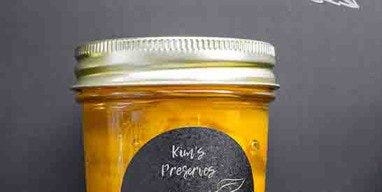Glass-Blowing History
Glass-blowing was invented in the first century B.C. by a Syrian crafter. As time progressed, glass- blowing evolved, and the Roman Empire used this process for many tasks involving glass. The first glass workshops were instituted by the Phoenicians, and glass-blowing was also performed by people in ancient Egypt. The invention of the blow pipe changed how glass-blowing was performed, and later, the entire process was automated with machines.
Earliest Evidence: 37 to 4 B.C.
Research has uncovered clues about the earliest glass-blowing, which occurred in Mesopotamia. Gradually, the process spread to places including Greece, China, and North Tyrol. Scientists have found glass beads and amulets that date back thousands of years, but initially, working with glass was not considered an art. Glass-makers made containers by wrapping hot glass around a clay form. After the glass cooled, glass-makers would pick out the core to leave the glass vessel.
Roman Glass
Romans were active in glass-making, trading glass items throughout the Mediterranean and western Europe. Romans were also the first to use glass architecturally in buildings as windows. Although these first windows were rudimentary, they became an important architectural feature in Roman buildings. Geographical division in the Roman Empire caused glass-making processes and characteristics to differ. When the Roman Empire started to decline, glass-making declined along with it.
Middle Ages and Italian Glass
During the Dark Ages in Europe, glass-making didn't occur. By the time of the Middle Ages, glass production was mainly done to make stained glass windows for churches and cathedrals. These windows contained intricate depictions of Bible characters, and some told stories.
Trading eventually brought glass to Venice, which led to the formation of the Venetian glass-makers' guild. All glass-makers in Venice had to move to the island of Murano in 1291 so they could be controlled and monitored by the glass industry and to prevent dangerous fires in Venice from their furnaces. The glass-blowers and their families weren't allowed to leave the island; if they did, they would be put to death. Some glass-makers did manage to escape, though, and they shared their art with artisans in other countries in Europe. Venetian glass was first used to make rosaries, and the Venetians also learned how to use glass for mirrors instead of metal.
Glass Art in the Renaissance
During the Renaissance, glass was produced for both functional products and art. Glass was used to make microscopes and telescopes, and eyeglasses were also refined and improved. Diamond-point engraving was becoming popular, and glass-blowers were succeeding in making glass that was easy to cut and almost clear. George Ravenscroft created a glass formulation that used lead, making it possible to work with the glass for a longer period of time.
China and the Middle East
While the Roman Empire was active, there is evidence to suggest that China was also making glass. Chinese glass-makers made engraved figures and eye beads. It's surmised that Persian glass artists showed Chinese glass-makers how to blow glass. Although Muslims in the Middle East were forbidden to partake in self-indulgent pastimes, people decorated homes and holy buildings with glass. The Islamic people were also very talented in making glass that resembled turquoise. Egypt also contributed to glass-making knowledge by creating the process of glass enameling. This involved painting the glass with a silver luster and heating it. This process created different colors in the glass. In 1400, Damascus was destroyed by a Mongol conqueror, which ended the production of Islamic glass.
American Glass Production
Glass-making in America began in the early 1600s with the colonists. A glassworks was formed in Jamestown, but the company didn't survive more than a year. Similar companies were also formed in Salem and Philadelphia, but these companies also failed. In the next century, demand for glass increased, and the first successful glassworks was opened in 1738 in New Jersey. This company produced window glass and bottles at first, later adding tableware to their production list. As demand for glass increased more, glass-makers invented new methods to make glass more quickly. This enabled glass-makers to begin making colored glass bottles and decorative glass. In the 20th century, mass-production of glass made it cheaper while still of good quality.
Facts and History Resources
- History of Glass
- The History of Glass
- Overview of Glass
- Tracing the Glistening History of Glass-Making From Ancient Beads to Contemporary Art
- What Is Glass?
- A Brief History of Glass
- Understanding the History of Glass
- How Glass Has Evolved
- Roman Glass
- Ancient Glass
- Glass-Blowing Information
- Glass: A World History
- The Science of Stained Glass
- A Transparent History of Glass
- A Brief History of Glass









